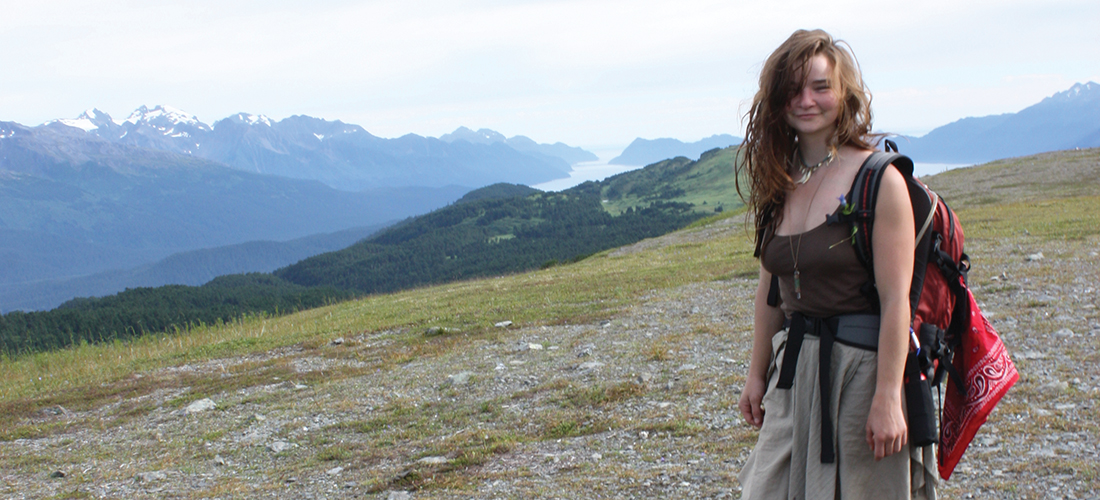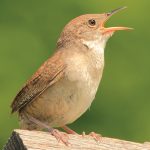
The Heat is On
The journey from Alaska to the Appalachians
By Katherine Smith
It’s nice to be hot again. That’s what I tell people when they ask how it was living in Alaska, and how it is to be back home. This time last year, and the previous year, and the one before that, I was living and working deep in the boreal woods of the Chugach, the second largest national forest in the country.
Each summer, our five-person trail crew lived in tents for eight consecutive days every two weeks as we built the forest’s newest trail in an area accessible once a day by train — that is, if the tracks weren’t flooded. The Chugach is where, during my first hitch, a bear clawed through my tent and stole my only clean clothes. It’s where I learned to fell big trees with a big chain saw and little ones with an ax; where I learned to shoot a rifle; and where I competed with the guys to carry the most tools, hiking miles with a sledgehammer on one shoulder and a steel rockbar on the other.
It’s where I grappled with scoliosis, hypothermia and trench foot, and learned the hard way that my worth is not defined by what I can do. It’s where I learned that my four fellow trail workers eat even more than my four siblings, and became known as Mama Kate for Southern-size group dinners of jambalaya, biscuits and gravy, cornbread and collards. I’ve spent solid eight, 12-hour days inside long sleeves, high socks and a bug net as protection against every kind of winged, blood-sucking bug imaginable, and hitches inside fishing-grade rubber raingear and Xtra-Tuff rubber boots, falling asleep and waking each day to the sound of hammering, unending rain.
My favorite hitches were the ones that should have been hardest, redeemed always by my jolly crew family. We’d belt out Irish drinking songs in hailstorms, make doughnuts from canned biscuit dough, carry 600-pound trees together for a primitive turnpike, laugh until we cried, and play games of bocce ball, cribbage and dice long into the night.
July in the Chugach brought a cacophony of flowering salmonberry bushes, an Independence Day tradition of exploring Bartlett Glacier, and buying a second freezer for all the salmon we caught. July is sunlight by midnight, bears by day, wolverines by night, and lynx prints in the mud. July brought my first wildland firefighting assignment when I was flown out to Colorado and Wyoming for 18 days of adrenaline and exhaustion digging line, laying hose, sawing, protecting cabins when the fire grew closer and, hardest of all, eating MREs. July is Alaska’s warmest, driest month, shooing my crew and me skinnydipping into sun-baked kettle pools and, after long days, into the numbing glacial creeks where we gathered drinking water. One July, the heat climbed to nearly 80 degrees.
Now, back in the 100s, I am exactly where Alaska shepherded me. For the last three summers, I spent my days off gathering the plants that healed my chronic urinary tract, bladder and kidney infections. Now I am in the Appalachian Mountains, deep in a clinical study of the herbal medicine that redeemed my health. I am learning how to read bloodwork and walk barefoot; the chemistry of polyphenols and my body with 500 acres of quiet, virgin land.
There is vastly more plant diversity here, the woods reverenced for their endangered medicinal gems like bloodroot, black and blue cohosh, goldenseal, ladies slipper and American ginseng. The ancient plant healing tradition has been kept vividly alive by the sharing of medicines from native peoples to Irish and Scottish immigrants and African-Americans, whose poverty passed down the knowledge by necessity. And while I am learning textbook assignments of isolated botanical constituents to illness, it’s framed by the Western tradition of herbalism that hails back to Hippocrates — the assessment of imbalance of the individual’s hot, cold, damp, dry, tense and lax energetics.
Here, I’m learning the science of my granny’s medicine.
July in the Appalachians is the sweet scratch of blackberry and briar-draped bushes, peaches for sale in old truck beds, and sunshine as the crow flies. It’s just now here, on the proverbially flying time, and yet we find it just the same as we remember it in our young hearts. It’s good to be home in the first mountains I loved, in dusks wet with locust song, fingers purple with mulberry juice, bluegrass on the front porch, an accent growing familiar again on my prodigal tongue, and, slow and honeyed as the South, the sweet, heavy heat. PS
Katherine Smith is a wild-prone witness who grew up swinging from ivy vines and hunting water lilies in Pinebluff, North Carolina. She’s returned to North Carolina to study clinical herbalism at the Eclectic School of Herbal Medicine in Lowgap, calling Ireland and Alaska home in the interim.





